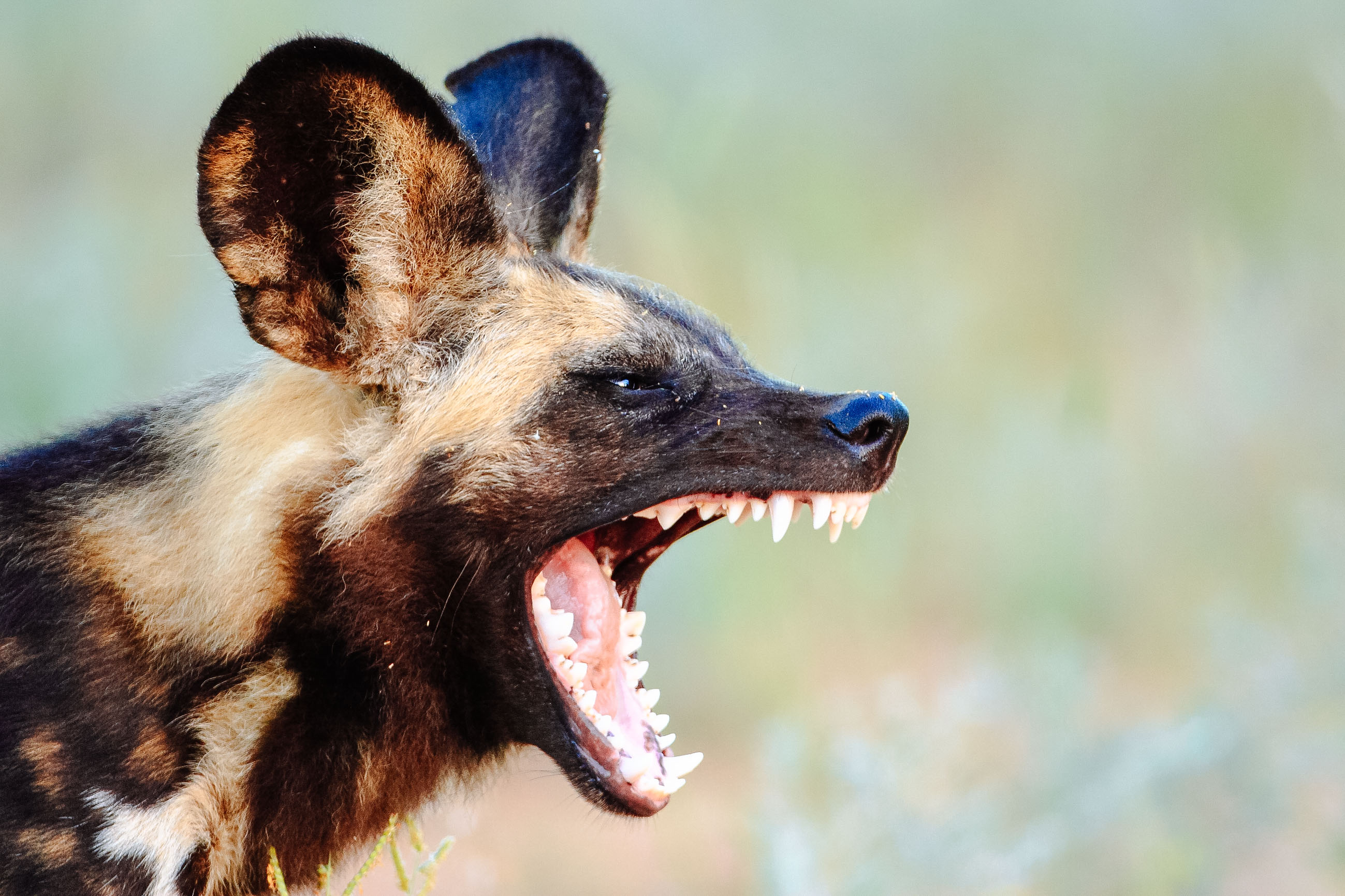

Today, however, they only inhabit parts of Eastern and Southern Africa. Painted wolves used to be found all over the continent. Nonetheless, they will follow their prey into forested areas if they have to. On the other hand, African wild dogs hunt in numbers, cooperating to bring their prey down. Woody or forested areas are not ideal for them, as trees tend to come in the way during hunting, especially considering that they are pack hunters.ĭense vegetation is ideal for solitary hunters, such as leopards, that need to stalk their prey, getting as close as possible before launching an attack. As such, you are likely to find them in the savannah and grasslands. This gives them the ability to crunch through bones with ease.Īfrican wild dogs prefer living out in the open. The Cape hunting dog has 42 teeth that are significantly larger than other canines’. This is because, as mentioned, they do not have dewclaws. Unlike other dogs, painted wolves do not have five digits on their paws and have only four. Male painted wolves are typically larger than females, regardless of the region. It has been observed that dogs from the southern part of the continent tend to be larger, on average, than their counterparts in East and West Africa. These dogs can be quite hefty, with some individuals weighing in at close to 40 kgs. The average African wild dog measures 1.5 meters from the tip of the nose to the tip of the tail and can be as tall as 75 centimeters at the shoulder. These features give them exceptional senses of smell and hearing. These dogs also have black muzzles and large, round ears. Painted wolves have a lean, athletic build and long, slim legs. As such, you can differentiate individuals based on the patterns on their coats. The African wild dog spots a uniquely patterned coat consisting of black, brown, white, and yellow markings, hence its name “the painted wolf.” Just like tigers, giraffes, and zebras, each dog’s markings are unique. Skip to: Characteristics, Range & habitat, Diet, Behaviour, Fun facts, Video With only about 6,600 individuals left in the wild, the painted wolf is an endangered species. The biggest difference between the Lycaon and Canis genera is that the former are hypercarnivores, meaning that more than 70% of their diet consists of meat. However, it does not belong to the genus Canis where dogs, coyotes, and wolves belong rather, it belongs to the Lycaon genus, which it happens to be the only living member of. This canine is the largest ‘dog’ in Africa. Even though they might not look like much, these animals have a better hunting success rate than lions and leopards! Here is everything you need to know about this animal.Īlso known as the Cape Hunting dog or the painted wolf, the African wild dog is a canid that is indigenous to sub-Saharan Africa. These characteristics have made the painted wolf be arguably the most successful hunter on Africa’s dangerous plains. 128-136., doi:10.The African wild dog is one of the most successful hunters on the African plains, and are highly social and intelligent animals. " Fencing Affects African Wild Dog Movement Patterns and Population Dynamics." Oryx, vol. " The Successful Reintroduction of African Wild Dogs ( Lycaon pictus) to Gorongosa National Park, Mozambique." PLOS ONE, vol. " A Two-Step Dilution Tri-Egg Yolk Extender Containing Equex STM Significantly Improves Sperm Cryopreservation in the African Wild Dog ( Lycaon pictus)." Cryobiology, vol. " No Evidence of Handling-Induced Mortality in Serengeti's African Wild Dog Population." Ecology and Evolution, vol. " Investigation and Control Strategy for Canine Distemper Disease on Endangered Wild Dog Species: A Model-Based Approach." SN Applied Sciences, vol. " Sneeze to Leave: African Wild Dogs ( Lycaon pictus) Use Variable Quorum Thresholds Facilitated by Sneezes in Collective Decisions." Proceedings of the Royal Society B, vol. " High Temperatures and Human Pressures Interact to Influence Mortality in an African Carnivore." Ecology and Evolution, vol. " Ecological Predictors of African Wild Dog Ranging Patterns in Northern Botswana." Journal of Mammalogy, vol.

" African Wild Dog." International Union for Conservation of Nature's Red List of Threatened Species, 2012., doi:10.2305/IUCN.UK.

" African Wild Dog." World Wildlife Fund.


 0 kommentar(er)
0 kommentar(er)
